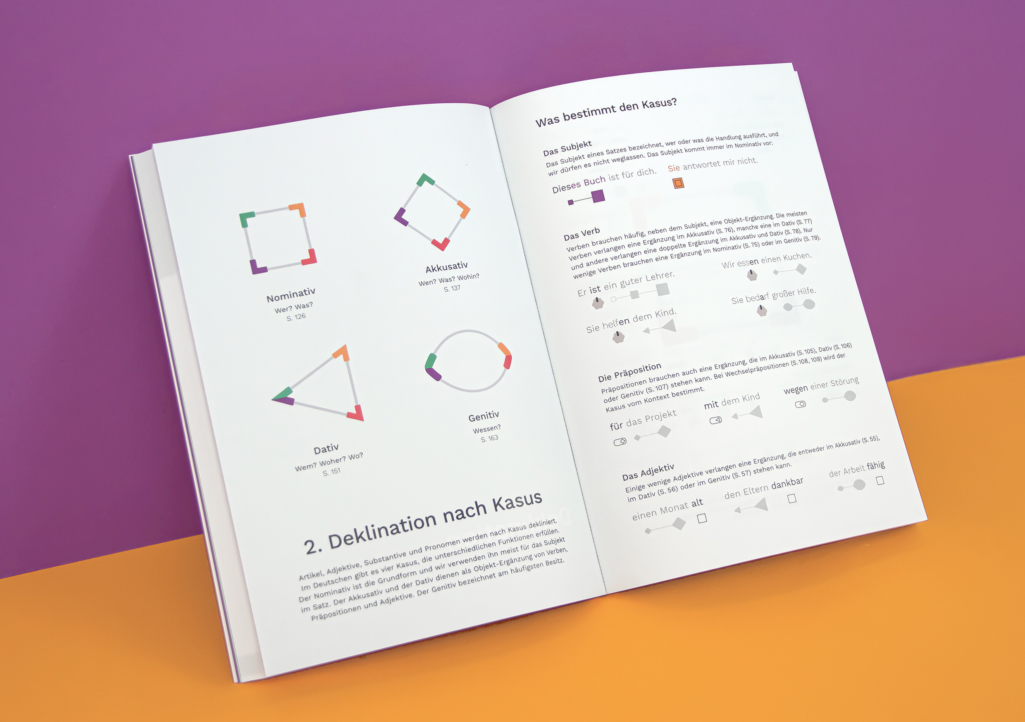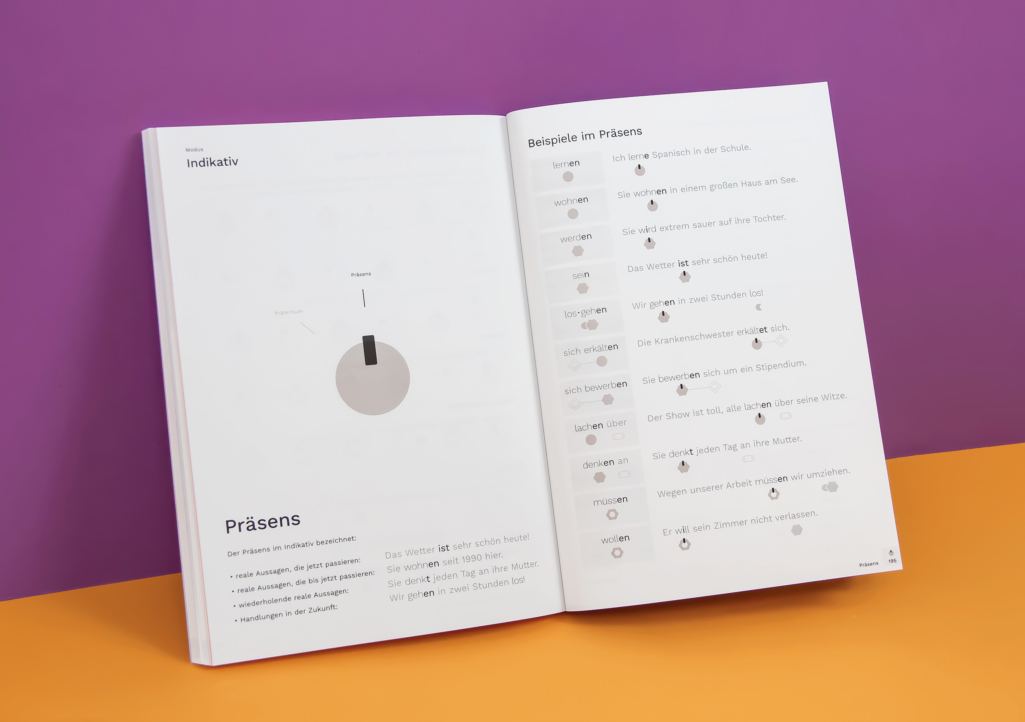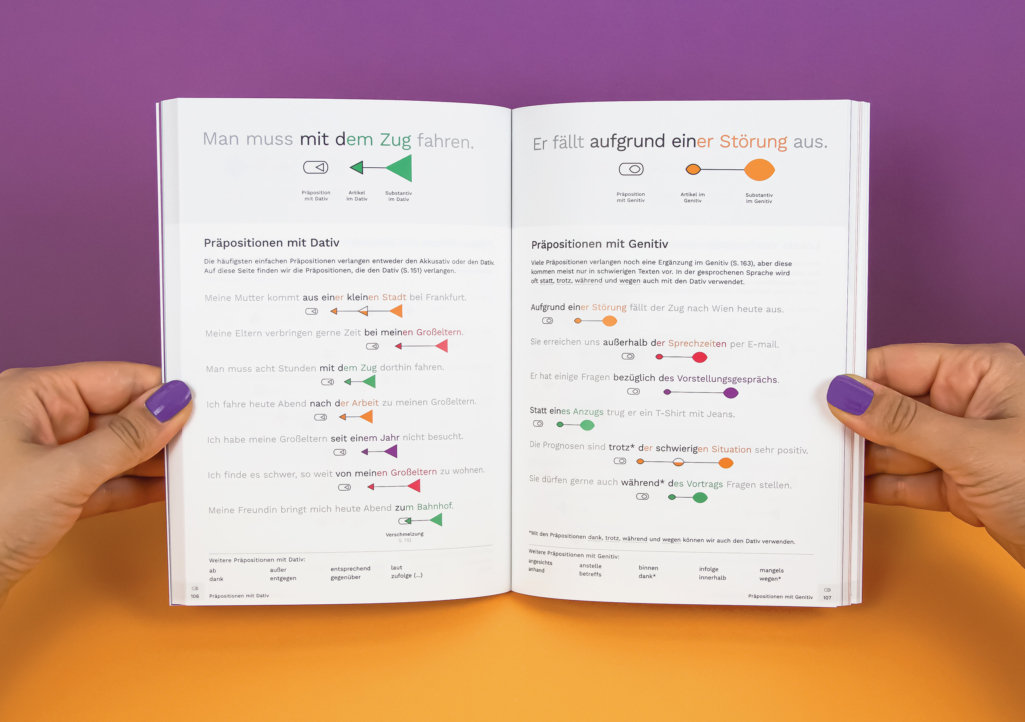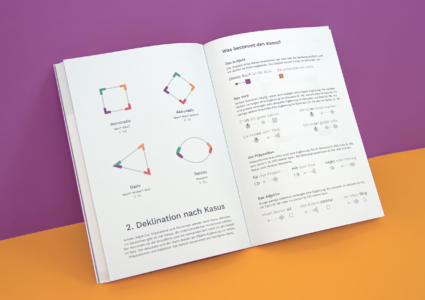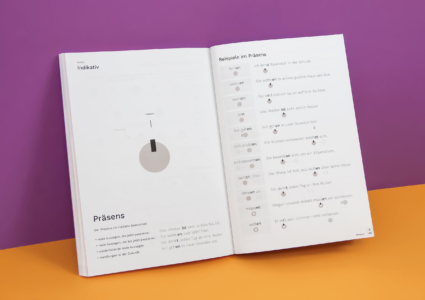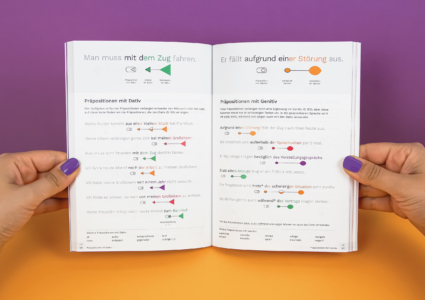Visuals for language discusses the role of visual support in grammar instruction. We introduce a consistent visual system developed for German as a foreign language which associates visual features to grammar categories in order to reveal relationships within structures and foster comparison throughout all representations.
Visuals for language is a research project focused on how visual techniques such as highlighting and encoding can be combined to explain grammar rules and structures to non-native speakers. We present a consistent visual system developed for German grammar, which combines text appearance and symbols to reveal multiple grammar categories relevant for non-native speakers, such as grammatical gender, case, declension, verb tense, verb position, comparison and more. By maintaining a consistent visual character, such support fosters structure recognition and comparison as well as pattern identification throughout all grammar representations. Initially developed for the German language, this systematic approach of associating grammar categories with visual features could be adapted to create new systems for other languages.
2023 Update: Optimized version for color vision impairment. We have released a version of the first edition with an optimized color palette. The content is exactly the same, only the colors used in the system have been adjusted so that more people can distinguish the colors.
Publications
Associated Publications
—
ECLL2020 Conference Proceedings,
2020
Complementary to verbal explanations, visual techniques are often implemented in grammar instruction to help learners process information. Highlighting using typograhic features can help distinguish the structure in focus from its context, aiding information seeking and drawing attention to important features. Additionally, visual encoding can associate graphical traits to grammar categories to support the identification and recognition of related structures and language patterns.
An analysis of current grammar books for German as a foreign language has shown, however, that a combination of multiple encoding techniques representing coexistent grammar categories can be challenging to make sense of. The absence of a global design strategy within a book generates inconsistent and sometimes conflicting grammar representations, which can lead to misunderstandings and create a hindered and fragmented learning experience.
In order to avoid such conflicts, this research presents design guidelines to combine both techniques efficiently and introduces a visual system developed for German as a foreign language. In addition to indicating a word’s class, similar to Montessori Grammar Symbols, this system uses text appearance and symbols to indicate further grammar features relevant for non-native speakers, such as grammatical gender, case declension, verb tense, etc. By maintaining a consistent visual character, such support fosters structure recognition and comparison as well as pattern identification throughout all grammar representations. Initially developed for the German language, this systematic approach of associating grammar categories with visual features could be adapted to create new systems for other languages.
Expand
—
Eine grafische Grammatik für Deutsch als Fremdsprache,
2021
Wenn wir eine neue Sprache lernen, stoßen wir auf viele neue grammatikalische Begriffe: Artikel, Modalverb, Nominativ, Partizip, und so weiter. Dieses kleine Buch verwendet daher ein visuelles System, um dir die deutsche Grammatik und ihre Begriffe vorzustellen. Zeichen, Schrift und Farben machen grammatikalische Merkmale sichtbar und unterstützen dich dabei, die Struktur im Fokus zu verstehen und zu merken. Diese visuelle Unterstützung wird im gesamten Buch einheitlich verwendet. Damit wird es für dich einfacher, den gelernten Inhalt wiederzuerkennen.
Expand


